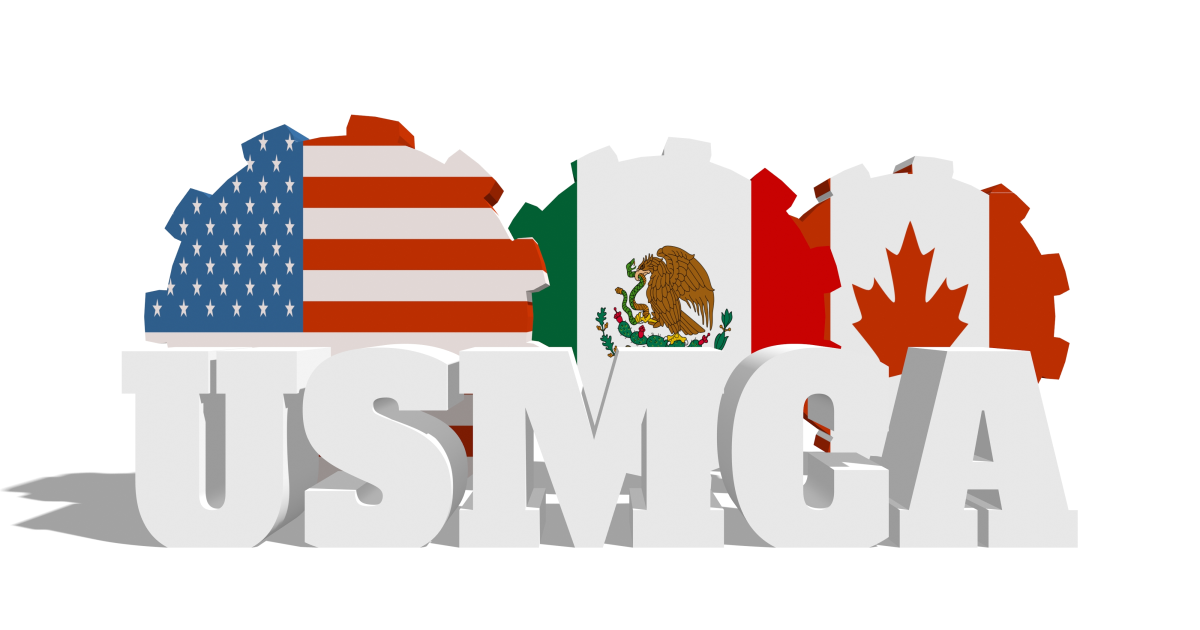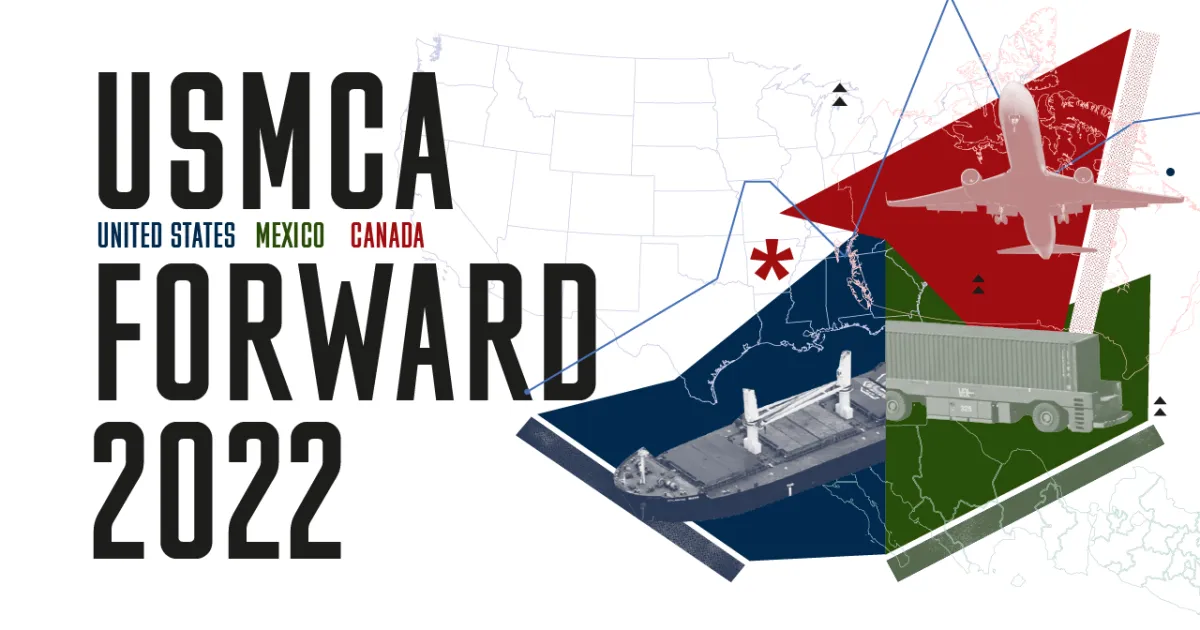USMCA Forward:
Building more integrated, resilient, and secure supply chains in North America
Overview
The United States-Mexico-Canada Agreement (USMCA) provides the regulatory certainty and market access guarantees that underpin North American trade and investment. This report addresses the importance of USMCA for North America in supporting the goal of building more integrated, resilient, and secure supply chains and discusses what additional investment and policies are needed. It includes contributions from experts from the U.S., Canada, and Mexico, as well as viewpoints from senior government officials, leaders in business, academia, and civil society.
Letter from the editors
In their overview of this year’s report, Joshua P. Meltzer and Brahima S. Coulibaly note that several recent pieces of U.S. legislation are potential gamechangers when it comes to expanding manufacturing and supply chains in North America. However, to fully realize these opportunities, additional investment and policies will be needed in areas such as labor market training and education, access to business services, ensuring supply chains are free of forced labor, enabling data flows, and aligning on regulation and non-tariff measures.
Read IntroductionNational Security
Supply chains built around efficiency can create national security risks. Bradley Martin discusses the role of the USMCA in building more resilient supply chains, increasing national security, and harnessing economic competitiveness to reduce risk and cultivate resiliency.
Read Chapter 1Imports from Asia
Despite significant new subsidies that should lead to some nearshoring in North America, challenges remain. David Dollar assesses the barriers particularly in Mexico, where the investment environment and infrastructure compare unfavorably to peers in Asia. He also discusses the ongoing importance of engagement with Asia and China in building competitive North American supply chains.
Read Chapter 2Human Capital
Addressing Mexico’s education gaps and lack of skilled workforce will be key if Mexico is to fully benefit from the opportunities to expand North American supply chains. Sylvia B. Ortega Salazar discusses pathways to equip the Mexican workforce with the skills to participate more fully and productively in manufacturing and international trade.
Read Chapter 3Services
Business services are a core value add for manufacturing, accounting for approximately 27 percent of manufacturing export value in many countries and closer to 50 percent when accounting for services produced in house. J. Bradford Jensen analyzes the role of business services in North American trade and highlights areas for opportunity, such as the gap in business services for sophisticated supply chains in Mexico and the relevant education required to fill this gap.
Read Chapter 4Non-tariff Measures
Some progress has been made on reducing non-tariff barriers (NTBs) to trade, however, important challenges remain to minimize unnecessary costs and increase competitiveness in North American supply chains. Beatriz Leycegui lays out improvements with respect to NTBs and discusses next steps to address unnecessary NTBs that can hinder growth in supply chains.
Read Chapter 5Data Flows and Critical Technologies
Critical technologies present unprecedented opportunities for efficiency and economies of scale. Dan Ciuriak discusses the role of USMCA in reducing regulatory uncertainty around data flows and investment risk.
Read Chapter 6Labor Standards
Labor standards and human rights considerations can be powerful drivers of supply chain resilience and risk mitigation. Kevin Kolben highlights how the USMCA labor chapter and rapid response mechanism offer an avenue for higher business efficiency and resilience. For example, holding trade sectors accountable to international labor standards can decrease strikes, increase customer support for goods, and avoid forced labor in supply chains.
Read Chapter 7Transparency
Visibility into supply chains is important to accurately assess and determine the risk of using inputs made with forced labor, to account for environmental harms, and to minimize risk when reshoring key industries. Thomas Ewing and Alan Bersin discuss how federated learning can be used to gain these insights and what it might mean for North American supply chains.
Read Chapter 8
